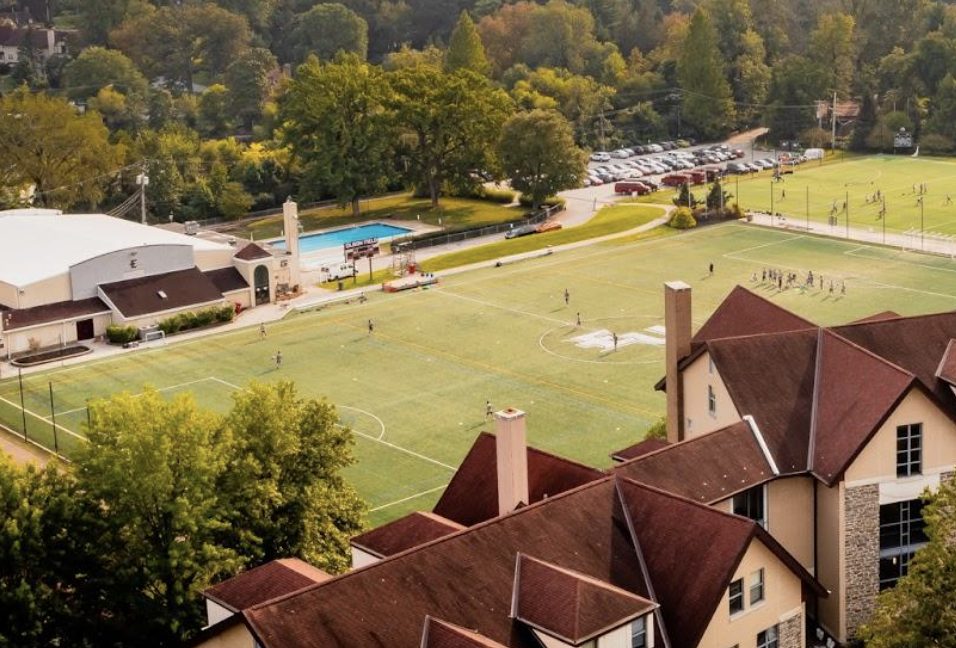By: Lenora Kirkland

This month, Eastern University was given a grant of one million dollars to improve our campus. Plans include redoing the gym room, adding new offices, and making preparations for a new wrestling team.
“We are extremely grateful and blessed to receive these funds,” President Ron Matthews shared in the announcement email. “The completion of these projects will greatly enhance and strengthen our Eastern campus, community and facilities. One of the five priorities in Eastern’s 2022-2027 Strategic Plan is to increase philanthropic support to Eastern, and this award is a strong start to this effort.”
The grant money comes from a federally funded Pennsylvania grant program called RACP (Redevelopment Assistance Capital Program). In order to qualify for these funds, Eastern filled out an application outlining their intentions for the funds if they were to receive them. This clarification regarding the intended use of the money is both required and binding. In other words, if the school applying for grant money receives the funds, they must be used as indicated in the application.
“The $1 million awarded to Eastern is designated for renovations to the athletic facilities, including gymnasium additions and updates, site work, a vehicular bridge, a pedestrian walkway, and an internal drive connection to on-campus athletic facilities,” President Matthews shared in the email.
When Eastern applied for this grant, they promised the money exclusively for the development of athletic programs and facilities. Now that they have received it, it must go towards this development project. Many students are thrilled at the potential this money has to bring about improvements to the place that so many of us call home. That being said, some are less optimistic upon hearing the plans for these funds.
Grace Koncsics, a senior, has been thoroughly involved in interpreting how this grant money, and the current decision on how to use it, will affect students at Eastern. She notes that “Eastern has 500 student athletes, out of approximately 5,400 students attending Eastern, which means 4,900 students are not Student Athletes—this makes up not only the majority but a large majority.”
The decision has sparked significant controversy amongst Eastern University’s student body, who are disappointed by the lack of concern for other seemingly more important uses for these funds. Most notably, students have reacted strongly to the lack of financial attention given to various problems pertaining to Eastern’s residence halls.
“The dorm I live in (Hainer) has black mold, water heater issues, flickering lights and walls with dents,” Koncsics said. “The hall my friend lives in (Gallup) has insect infestations as well as only one working washer. Eagle is constantly damp and condensation on the basement floor is frequent. Kea’s bathrooms flood consistently and the basement’s mold is dangerous.”
Koncsics has been actively involved in the push-back against Eastern’s decision through meetings with SGA and communications with both Kenton Sparks as well as the office of the Provost. Per Koncsics’ initiation, there has also been a petition circulating that received over 200 signatures in the span of two hours, as well as a number of anonymous comments that she shared.
According to Koncsics, “The petition was a two-day affair where I went around and asked as many students as I could to sign and asked them ‘would you be willing to sign a petition against more funding for the gym/gym renovation and instead funding for the dorms?’”
One student commented, “I am a student athlete and the dorms are disgusting.” Another noted, “We don’t want a new gym; I want to wash my clothes.” Even a number of Eastern’s student athletes are skeptical of the current plans for the grant money. An anonymous student athlete said, “I’m a student athlete and the gyms are fine. I’m tired of the mold.”
“My hope is that next year Eastern will fix this massive mistake by asking for grant money for the dorms and in the meantime, taking some of its funds and using it immediately and directly to the dorms,” Koncsics said. “I just hope the biggest success is the change in monetary choices. We will see what happens during the meetings and forums yet to be held!”
